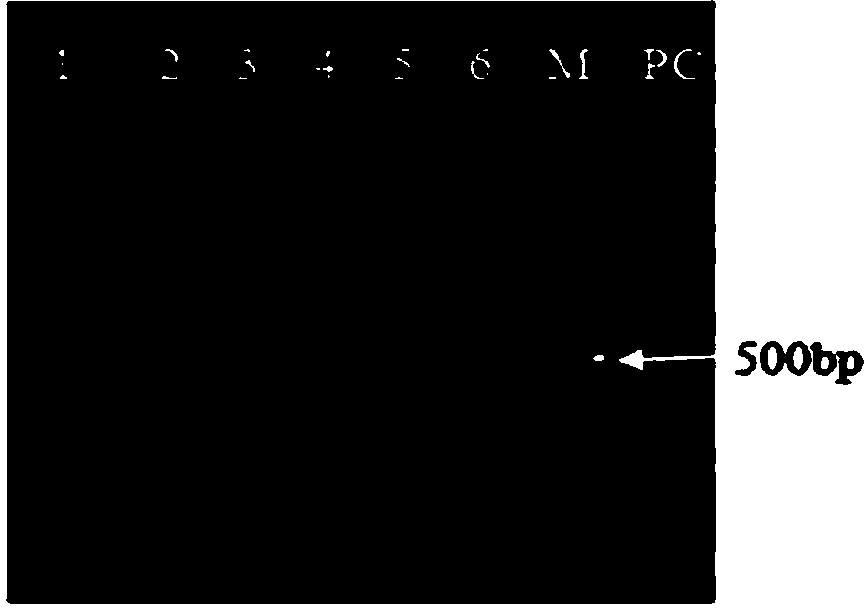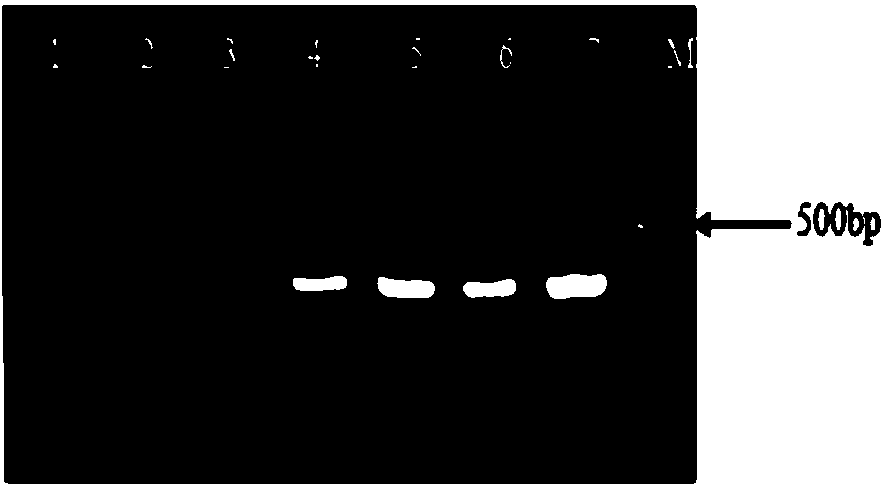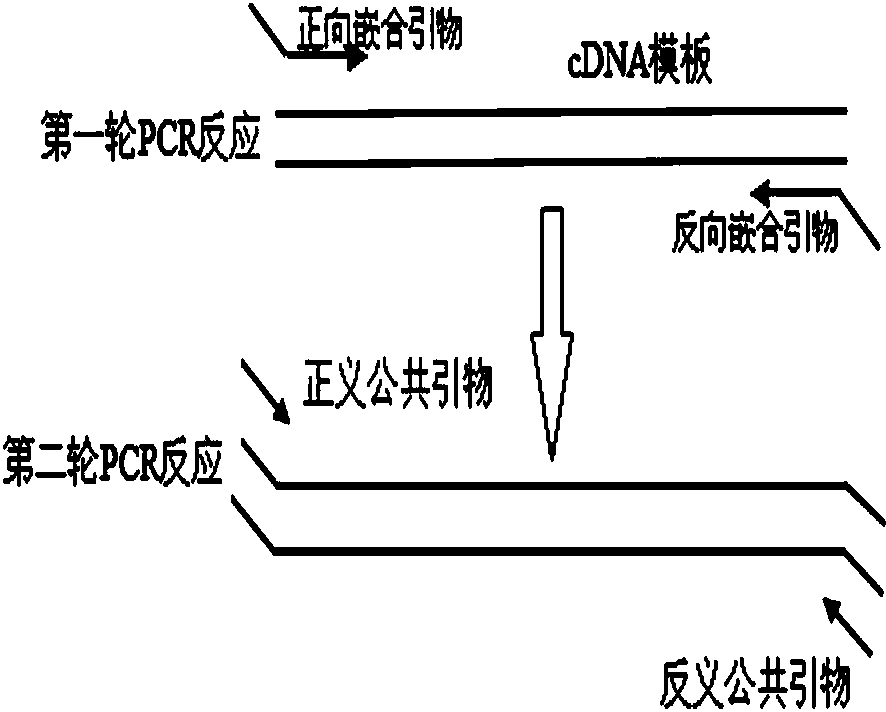Multiplex PCR (polymerase chain reaction) kit for detecting leukemia fusion genes
A technology that integrates genes and leukemia, and is applied in the determination/inspection of microorganisms, biochemical equipment and methods, etc. It can solve the problems of affecting amplification efficiency, complex detection methods, and high professional requirements, so as to improve detection efficiency and save reagent usage. , The effect of high clinical detection rate
- Summary
- Abstract
- Description
- Claims
- Application Information
AI Technical Summary
Problems solved by technology
Method used
Image
Examples
Embodiment 1
[0031] In this example, multiple primers were validated by clinically confirmed specimens of patients carrying fusion genes of AML1 / ETO, BCR / ABL e1a2, BCR / ABL e13a2, BCR / ABL e14a2, PML / RARα L type, PML / RARα S type, and E2A / PBX1 type I The feasibility of combining the working principle of public primers and the sensitivity of detection.
[0032] The multiplex PCR kit for detecting leukemia fusion genes used in this example includes: conventional multiplex PCR components, chimeric primers and public primer pairs for common leukemia fusion genes. The public primer pairs and chimeric primers (multiple primer sequences with public primers) for common leukemia fusion genes and the corresponding detected fusion genes are shown in Table 1.
[0033]Table 1
[0034]
[0035] The above conventional multiplex PCR components include: positive control primers, Taq DNA polymerase, dNTP, MgCl 2 , PCR buffer, deionized. The specific sequence of the positive control primer is: SEQ ID NO....
Embodiment 2
[0039] Embodiment 2, public primer sensitivity detection
[0040] The plasmids containing the common primer sequences at different concentrations were detected by the common primers SEQ ID No.1 and SEQ ID No.2. After extracting the plasmid containing the public primer sequence from Escherichia coli, use deionized water to dilute the gradient by 10 times, from 10 7 copy to 10 1 Copy and dilute the plasmid template with different concentrations as the DNA amplification template of the PCR reaction system; use 25 μL PCR reaction system: each 25 μL PCR reaction system includes: 5 U / μL Taq polymerase 0.15 μL, 25 mM MgCl 2 2 μL, 10 mM dNTP 0.5 μL, 10xTaqBuffer 2.5 μL, two public primers with a concentration of 10 μM each 1 μL, plasmid templates with different concentrations 1 μL, deionized water 16.85 μL; PCR reaction conditions are: denaturation at 95°C for 5 minutes; denaturation at 95°C for 30 seconds, Anneal at 55°C for 30s, extend at 72°C for 30s, a total of 35 cycles; final...
Embodiment 3
[0041] Embodiment three, multiplex PCR system sensitivity detection
[0042] Using the cDNA plasmid templates of e1a2 and e14a2 types of BCR / ABL, L and S types of PML / RARα, AML1 / ETO, and E2A / PBX1 type I fusion genes, the public primers and multiplex primers were detected by two rounds of PCR reactions using multiplex PCR The specificity and sensitivity of the primers used are SEQ ID No.1-SEQ ID No.14. Its working principle is as attached image 3 As shown, in the first round of PCR reaction, chimeric primers were used for amplification, and lower concentrations of chimeric primers were used to reduce the probability of interaction between primers to reduce dimers and possible non-specific amplification. The product fragments with common primer sequences at both ends are obtained as templates for the second round of amplification; the second round of PCR reaction is based on the public primers for the first round of product amplification fragments, the purpose is to improve th...
PUM
| Property | Measurement | Unit |
|---|---|---|
| Sensitivity | aaaaa | aaaaa |
Abstract
Description
Claims
Application Information
 Login to View More
Login to View More - R&D
- Intellectual Property
- Life Sciences
- Materials
- Tech Scout
- Unparalleled Data Quality
- Higher Quality Content
- 60% Fewer Hallucinations
Browse by: Latest US Patents, China's latest patents, Technical Efficacy Thesaurus, Application Domain, Technology Topic, Popular Technical Reports.
© 2025 PatSnap. All rights reserved.Legal|Privacy policy|Modern Slavery Act Transparency Statement|Sitemap|About US| Contact US: help@patsnap.com



